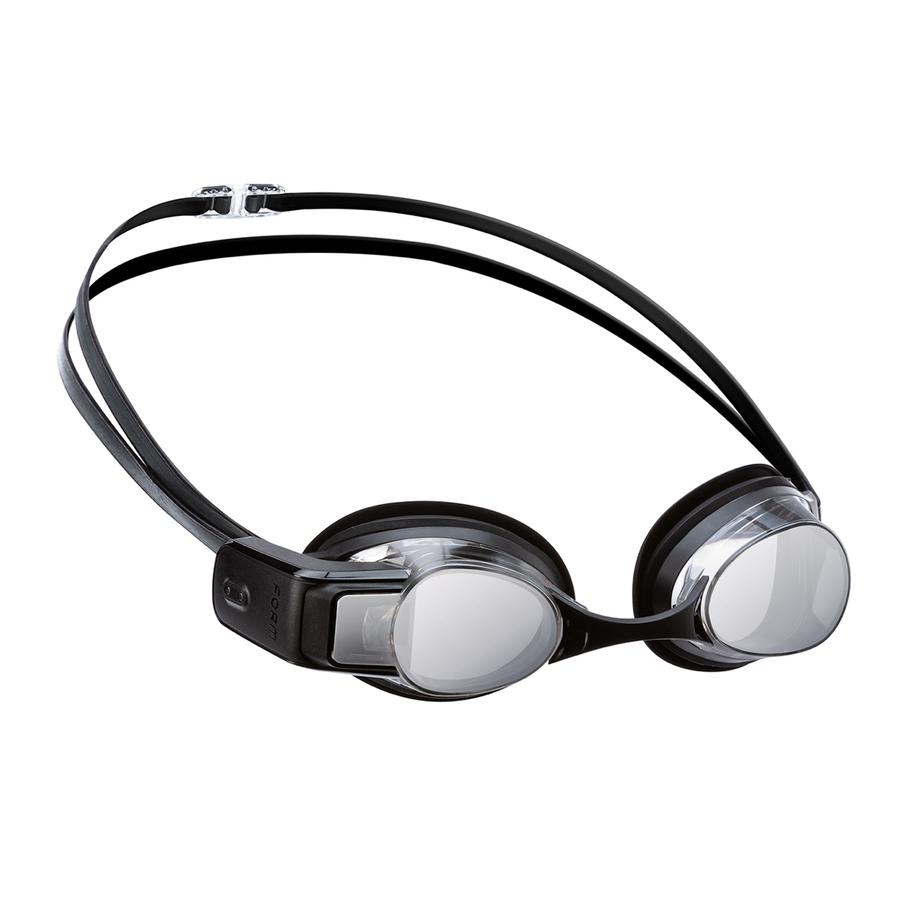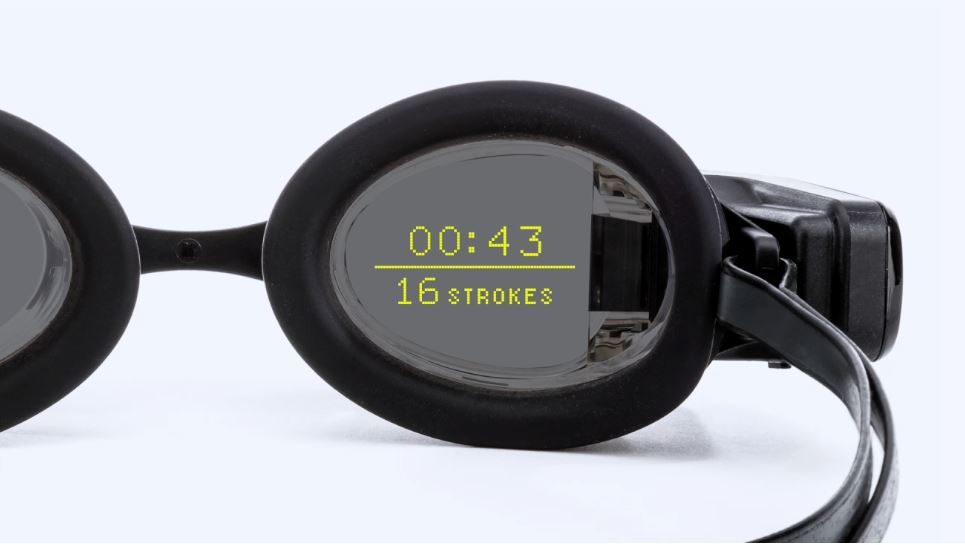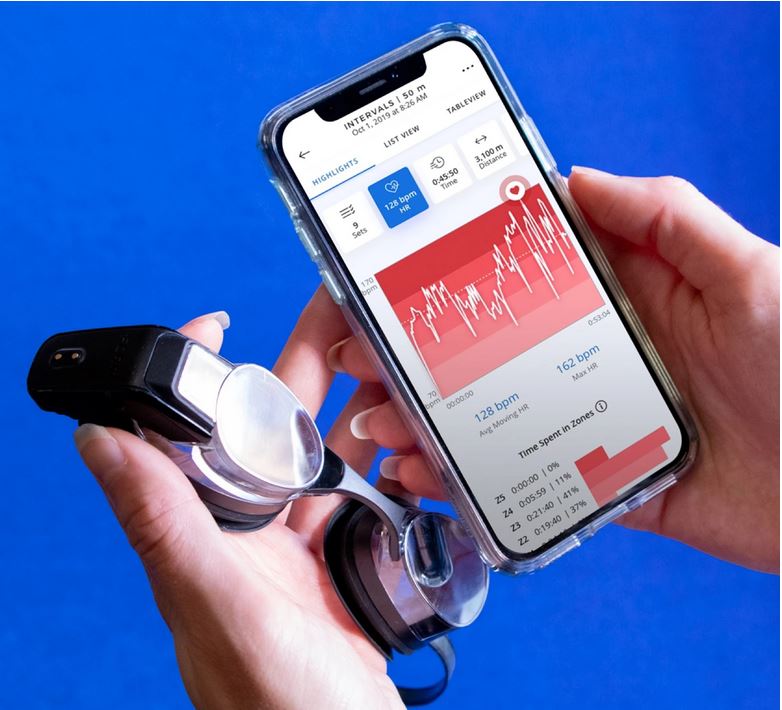Review: Form Swim Goggles
Form has come up with a game changing way to monitor training statistics while your swimming - a heads-up smart display in your goggles.

Thanks to a heads-up smart display, Form has revolutionized the way you keep track of swimming metrics during your workouts.
 The Form Swim Goggles retail for $269.
The Form Swim Goggles retail for $269.
For triathletes with a swimming background, navigating a pace clock at a pool is as easy as pulling on their swimsuit in the change room. After spending hours every week looking at the black line at the bottom of the pool and monitoring every interval looking up at the clock, keeping track of their times and efforts is a piece of cake.
Those who come to swimming later, though, often struggle with the swim/ timing/ intensity process. Many keep wishing there was some easier way to keep track of their splits, pacing and heart rate – something similar to what they can do with their GPS watch, or bike computer.
 The days of wishing that piece of equipment would magically appear are done, thanks to the innovative new goggles from Form Swim. These goggles feature a heads-up display that allows you to keep track of different metrics while you’re swimming. So now, instead of trying to look up at the clock and figure out how fast you just went for the last 100 m, that data appears on the display in your goggles.
The days of wishing that piece of equipment would magically appear are done, thanks to the innovative new goggles from Form Swim. These goggles feature a heads-up display that allows you to keep track of different metrics while you’re swimming. So now, instead of trying to look up at the clock and figure out how fast you just went for the last 100 m, that data appears on the display in your goggles.
If you’re more interested in, say, your stroke rate, or stroke count, or your distance per stroke, that data is easy to access, too. All the metrics, including split time, interval time, rest time, total time, stroke rate, stroke count, distance per stroke, pace per 100, pace per 50, distance, length count or calories burned can be set through the Form app on your phone.
To be honest, when I first ventured to the pool to give the Form goggles a try, I figured that it all sounded too good to be true. I don’t know why I had any hesitation: the guys behind the goggles had developed the Recon sunglasses back in 2010 that utilized a heads up display that was truly impressive. I was a big fan of the Recon glasses – I loved being able to focus on what was ahead and still be able to see data like speed or distance. (Recon was eventually bought by Google to be incorporated into their Google Glass project.) But could you put all this technology in an even tinier package, and make it all waterproof?
They did all that and more. Form has delivered all they promised. While the googles are a bit beefier than other training goggles I use, they are not dramatically so and are extremely comfortable. The smart display is masterful – as you can see in the video below, it’s easy to read without obstructing your vision.
All of which was great. Then a good thing got even better. Just before Christmas last year Form sent us Polar’s new OH1+ heart rate sensor and the clip to be able to use it with the goggles. Adding the ability to see your heart rate while getting all that other data adds another dimension to your training – especially when it comes to monitoring your fitness level and gains.
The goggles
If you’re going to spend US$200 on a pair of goggles, they better be comfortable, right? There are no problems on that front with the Forms – they come with five different nose bridges that allow you to wear the heads-up display on either your left or right eye. The double silicone strap is very easy to adjust to ensure you get a comfortable fit. The contoured silicone eye seals are extremely comfortable, too, and you don’t have to crank them onto your face to keep the water out. Add in the permanent anti-fog coating and you won’t have any issues even during your longest workouts.
Waterproof to 32 feet, the goggles come with an excellent ventilated carrying case that will keep them protected in your swim bag, too.
My one complaint with the goggles is you don’t seem to get as much peripheral vision as I’m used to with other goggles. In a pool that’s not a big deal, but in open water that would become a bit more of an issue.
Getting started
Setting up and using the Form goggles is a breeze. After downloading the app, you can simply sync the goggles and ensure you have the latest firmware update. That syncing process works easily after your done each workout – you can upload all the data to your phone and analyze your workout, and also upload it to services like Strava or TrainingPeaks.
The app is how you can customize the smart display to provide the info you want to see during your workout.
At the pool it’s easy to run through the menu to get yourself rolling on your workout – starting by setting up the pool length. Since almost all of my workouts are interval-oriented, I pretty much always picked the “intervals” setting as opposed to the “lap” option which would work best for a steady, continuous swim.
In interval mode the goggles are able to figure out when you start and stop each interval, giving you times after you’re done and then timing your recovery before you start off again. You will be amazed at how accurately the goggles figure out your intervals, too.
Polar OH1+ compatibility
The hardest part of this set up? Figuring out how to charge the OH1+ unit before I tried to sync it to the goggles. That’s actually a breeze – there’s an adapter that you can plug into a USB charger (I just used a USB port on my computer). Then you put the OH1 monitor into a clip and attach it to the strap. Turn the OH1 unit on, then turn the goggles on, pair them, and you’re done.
Polar has long been renowned for HR measurement accuracy and the OH1+ Form supplied us seemed to do a great job taking the HR data from our temple. (I don’t wear a swim cap in the pool, but you might have to put the goggles under your cap to get a decent reading.)
Real-time and Post Workout data
Thanks to the Form goggles, it’s now possible to hit the pool and get lots of real-time data while you’re swimming. As nice as that is, though, being able to analyze your workouts after the fact is even more important. That isn’t the only upside of using the Form goggles, though. After your workout you simply sync the goggles to your phone to download all the metrics from the workout, which allows you to analyze specific aspects of your stroke so you can work on those in future workouts.
When I first started reviewing the Form goggles, I wasn’t sure that those with a swimming background would be interested – they’re used to using a pace clock for their workouts and, while the smart display still allows you forward vision, there’s not as much peripheral vision as with other goggles, something seasoned swimmers might find annoying. The addition of HR data, though, is a game changer on that front. Even the most seasoned swimmers will likely want to be able to monitor their heart rate, at least for some workouts. The fact that they can analyze all that data after the fact, too, makes the Form goggles even more of a training tool likely to appeal to all triathletes.


